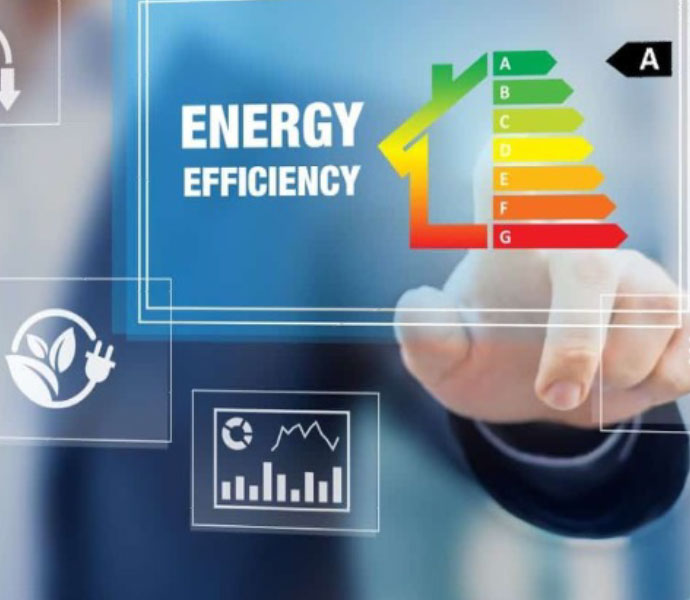With the urgency of climate change becoming a global priority, and commercial tenants struggling with escalating energy and operational costs, the demand for more sustainable, energy-efficient buildings is rapidly growing.
Organisations that implement effective energy efficiency strategies can significantly contribute to the preservation of our environment while also achieving substantial cost savings. In addition, building owners who embrace sustainable practices can increase property value and attract higher rental income.
This article will explore some of the most effective strategies for maximising energy efficiency in commercial premises.
The Business Case for Energy Efficiency Upgrades: Maximising ROI and Enhancing Building Valuation
Investing in energy efficiency upgrades can yield a considerable return on investment (ROI) for commercial building owners both in the form of cost savings while commercial tenants occupy the property and in terms of building valuation when either borrowing against or selling the asset.
According to GovUK, for many companies, a 20% cut in energy costs represents the same bottom-line benefit as a 5% increase in sales. Additionally, research by property company JLL found that a single-step improvement in EPC ratings produced a corresponding premium of 3.7% on building value and 4.2% on rents achieved.
As Government regulations continue to focus on non-sustainable buildings, the potential for higher capital returns on energy-efficient buildings is likely to increase. This makes sustainable buildings a more attractive proposition for investors.
Retrofitting Strategies – Making Existing Buildings More Sustainable
According to the World Economic Forum, if the current rate of commercial development continues, around 80% of buildings standing today will still be in use 50 years from now. Therefore, addressing climate change cannot solely focus on new design and construction but must also involve implementing sustainable long-term solutions for existing properties.
Retrofitting existing buildings with modern energy-efficient technologies is a practical approach to achieving higher energy efficiency in older premises. Some common areas of improvement include:
LED Lighting:
Replacing traditional lighting with LED fixtures can drastically reduce energy consumption and maintenance costs due to their longer lifespan and higher efficiency. Lighting accounts for nearly 5% of global CO2 emissions, and switching from old fluorescent lighting to LED options can provide up to 85% energy savings.
HVAC Optimisation:
Upgrading Heating, Ventilation, and Air Conditioning (HVAC) systems with energy-efficient models, implementing regular maintenance schedules, and optimising operational settings can significantly reduce energy usage.
Many commercial buildings have HVAC systems that are not operating as efficiently as they could be due to factors such as incorrectly sized systems, poor insulation, and outdated equipment. Developing a plan to optimise HVAC systems can involve various measures, such as improving insulation and utilising Building Automation Systems (BAS) for better control and cost savings.
Building Automation Systems (BAS):
It’s estimated that around 50% of energy used in commercial buildings is wasted due to inefficient building management systems. Integrating BAS allows centralised control of lighting, HVAC, and security elements. These systems can optimise energy usage based on things like occupancy patterns and weather conditions, therefore reducing energy bills.
And it’s not just about operational efficiency; incorporating BAS can increase building value too. According to the European Commission report on Macroeconomic and Other Benefits of Energy Efficiency, a smart system leading to a higher-performing building can add as much as 11.8% in lease value. And it can ultimately yield a 5% to 35% increase in sales value.
Compliance with UK Building Regulations: Understanding EPC Ratings and Minimum Energy Performance Standards
Energy Performance Certificates (EPCs) are essential for commercial properties in the UK, providing a measure of energy efficiency on a scale from A (most efficient) to G (least efficient).
The UK government mandates that all non-residential buildings must have an EPC rating of at least E to be legally let – this is known as MEES (Minimum Energy Efficiency Standards).
The penalties for non-compliance with MEES are severe. Letting a non-compliant property can result in a fine of 10% of the rateable value (minimum £5,000, maximum £50,000) for leases of under three months. For periods over three months, the fine increases to 20% (minimum £10,000, maximum £150,000).
EPCs must be displayed in commercial buildings if:
- The total useful floor area exceeds 500 square metres.
- The building is frequently visited by the public.
- An EPC has already been produced for the building’s sale, rental, or construction.
While there are some exemptions, the majority of commercial buildings will be subject to MEES.
Green Lease Agreements: Aligning Landlord and Tenant Incentives for Energy Savings
Green lease agreements are an inventive way to align the goals of both commercial landlords and their tenants towards achieving energy efficiency. These agreements can include clauses promoting sustainable practices and sharing energy savings benefits between both parties. Key aspects of green leases may include:
- Sharing the costs and benefits of energy-efficient upgrades.
- Setting targets for energy consumption reductions.
- Incorporating energy-efficient fit-outs and operational practices.
Green leases can substantially improve building energy performance by enhancing collaboration between landlords and tenants and show a commitment on both sides to reducing environmental impact.
–
Training and Engagement: Empowering Building Occupants to Conserve Energy and Reduce Waste
To truly increase energy efficiency, strategies should extend beyond physical upgrades to include the active buy-in of building occupants.
Training and engagement programmes are essential for educating occupants to adopt energy-saving behaviours and reduce waste.
These programmes can involve:
- Workshops and Training Sessions: Educating occupants about energy-efficient practices and the benefits of energy conservation.
- Incentivising Good Practice: Offering rewards for achieving energy-saving targets.
- Regular Communication: Keeping occupants informed about energy performance and encouraging feedback on energy-saving initiatives.
By building a culture of energy awareness and responsibility among building occupants, businesses can achieve sustained energy savings and environmental benefits. This improves the business’s reputation and empowers the occupants, making them feel responsible for their energy consumption.
If you’re ready to discover how the Lynx Energy and Carbon Assessors can help you make your commercial buildings more energy-efficient and sustainable, contact our team today.


Recent Comments